What troubles the world the most? Not war, water crises, or terrorism. It is obesity. It sucks the confidence and health out of you, leaving you in a ball of mess. What do you do then? How do you choose the right regimen among the plethora that has cropped up to cash in on your weakness? Well, it’s quite easy. There is Ramdev Baba for every problem. Here are 7 of his best yoga asanas that will slim you down. Try them.
- Bharadvajasana (Seated Twist)
Bharadvajasana or the Seated Twist is named after the sage Bharadwaj, who is one among the seven seers of India. Many of the hymns he composed were included in the Vedas. Bharadvajasana is a simple asana that can be done easily. Practice this asana early in the morning on an empty stomach. Bharadvajasana is an intermediate level Hatha Yoga asana, and it takes about 30 to 60 seconds to do it.
Benefits: Bharadvajasana stretches your spine, shoulders, and hips. It improves digestion, massages the abdominal organs, and makes excretion easier. The pose detoxifies your body and tones and strengthens your upper back. It also relieves neck pain and sciatica.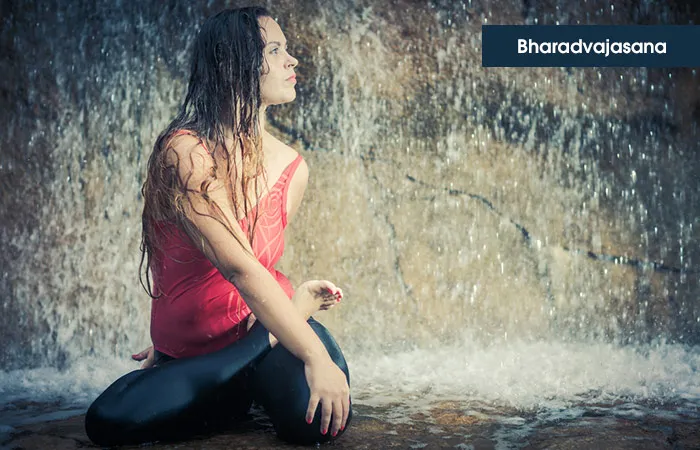
- Rajakapotasana (King Pigeon Pose)
Rajakapotasana or the King Pigeon Pose is a seated bend that puffs up your chest, resembling a pigeon’s stance. Hence, the name. It is an advanced pose and requires daily practice to master. Practice the asana in the morning or the evening. But make sure your stomach is empty and bowels are clean. Rajakapotasana is a Vinyasa Yoga asana and takes about 30 to 60 seconds to do.
Benefits: Rajakapotasana stretches your entire lower body and makes your hips more flexible. It strengthens your core, back, neck, and shoulders and opens up your chest
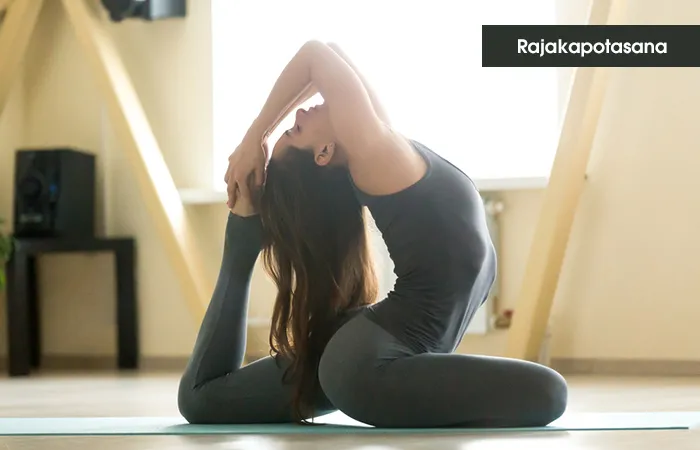
- Anantasana (Sleeping Vishnu Pose)
Anantasana or the Sleeping Vishnu Pose looks like the sleeping position of Lord Vishnu in Hindu mythology. ‘Ananta’ means infinite, and it is also the name of the snake that forms a roof to Lord Vishnu while he is sleeping. Practice Anantasana in the morning on an empty stomach. It is a basic level Hatha Yoga asana and takes 15 to 30 seconds to do.
Benefits: Anantasana increases blood circulation to your brain and heart. It stretches your entire body. It also treats disorders of the urinary bladder and uterus and solves menstrual problems. It strengthens your torso and increases the flexibility of the leg muscles.

- Malasana (Squat Pose)
Malasana or the Squat Pose is a simple squatting position. Something that children and people who do physical labor easily do. Also, it is an age-old position of excretion. It aligns the body in a way that makes defecation easier. Those who are not active enough find Malasana uncomfortable. Practice it daily in the mornings on an empty stomach to master it. It is a basic level Hatha Yoga asana that takes 60 seconds to do.
Benefits: Malasana stretches your back, ankles, and neck. It strengthens your metabolism and helps your body expel waste efficiently. It tones your belly and hips and makes your knees flexible. It opens up the tensed knots in your body and reduces tiredness, fatigue, and physical strain.
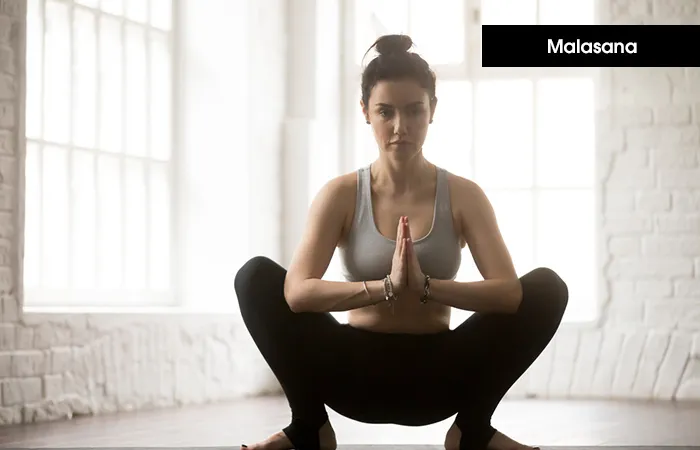
- Paripurna Navasana (Full Boat Pose)
Paripurna Navasana or the Full Boat Pose makes your body form a V-shape, resembling a steady boat. The asana represents the character of a boat that can brave the rough seas and help you reach your destination. Practice Paripurna Navasana in the mornings on an empty stomach and clean bowels. The pose is an intermediate level Ashtanga Yoga asana that needs 10 to 60 seconds of holding.
Benefits: Paripurna Navasana tones your abdominal muscles and strengthens your hamstrings and hip flexors. It stimulates the thyroid, kidneys, and intestines. It relieves stress and improves confidence. This pose balances your body and gives you mental stability.
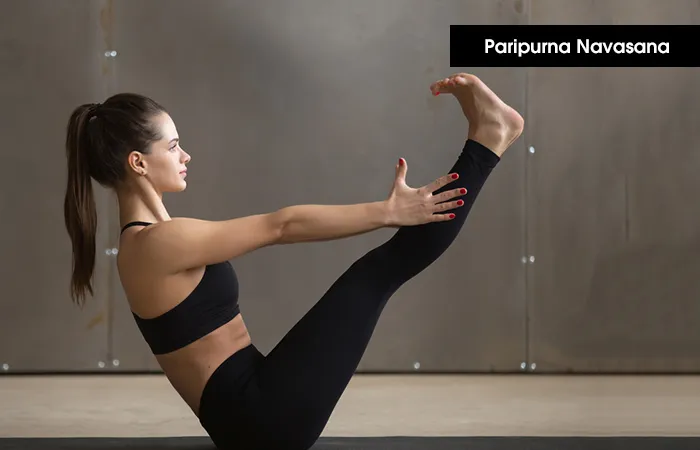
- Anjaneyasana (Half Moon Pose)
Anjaneyasana or the Half Moon Pose is named after a character in Hindu mythology called Hanuman. The stance of the pose is similar to Hanuman’s, and it is named after his mother called Anjana. Practice in the morning on an empty stomach if you can, or in the evenings after a gap of 4 to 6 hours from your last meal. Anjaneyasana is a basic level Vinyasa Yoga asana that needs 15 to 30 seconds to do.
Benefits: Anjaneyasana strengthens your knees and builds focus. It builds your core energy and treats sciatica. The pose stimulates your digestive organs and tones your entire body. It strengthens your quadriceps and gluteus muscles. It also develops your stamina and increases your endurance levels.
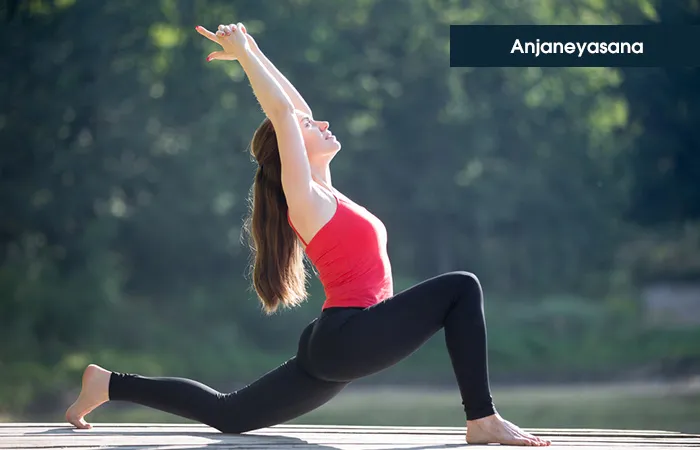
- Chaturanga Dandasana (Low Plank)
Chaturanga Dandasana or the Low Plank seems like a push-up, but varies a lot from it. It supports your entire body on your limbs. Practice it with extreme care as it can easily lead to injury if not done properly. Do Chaturanga Dandasana in the mornings on an empty stomach and clean bowels. The pose is a basic level Vinyasa Yoga asana that takes 30 to 60 seconds to do.
Benefits: Chaturanga Dandasana strengthens your biceps, triceps, and wrists. It is a good practice for arm balances. The pose also strengthens your toes and balances your body. It develops core stability and tones the muscles of your legs.
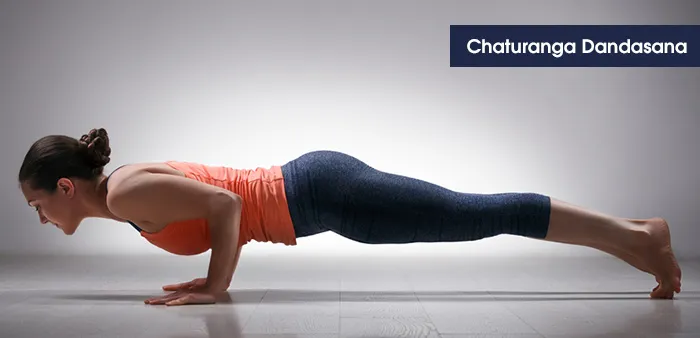
For being updated on Yoga and health follow me .